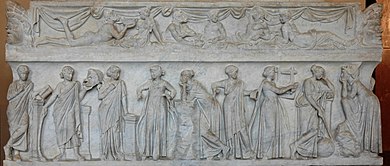This article needs additional citations for verification. Please help improve this article by adding citations to reliable sources. Unsourced material may be challenged and removed.Find sources: "Muses in popular culture" – news · newspapers · books · scholar · JSTOR (December 2012) (Learn how and when to remove this message)

Representations or analogues of one or more of the nine Muses of Greek mythology have appeared in many different modern fictional works.
The list of Muses comprises:
- Calliope, the Muse of epic poetry
- Clio, the Muse of history
- Erato, the Muse of love poetry
- Euterpe, the Muse of music
- Melpomene, the Muse of tragedy
- Polyhymnia, the Muse of hymns
- Terpsichore, the Muse of dance
- Thalia, the Muse of comedy
- Urania/Ourania, the Muse of astronomy

